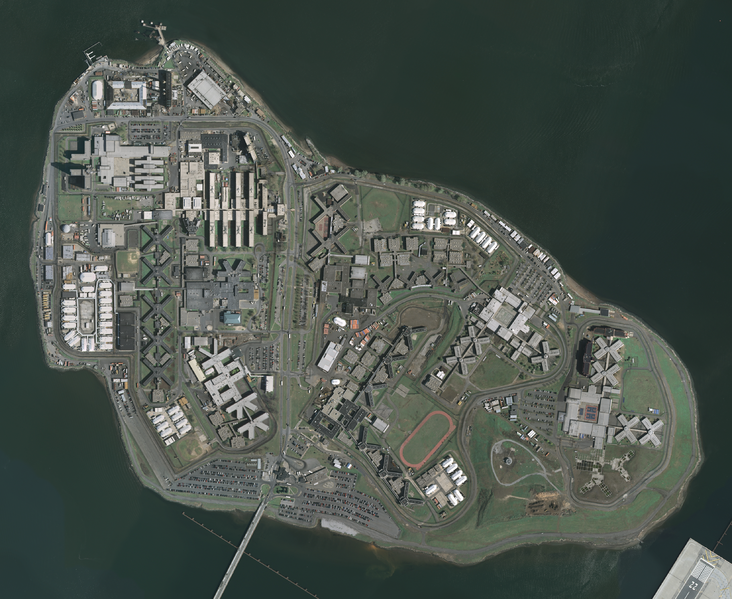
USGS
Rikers Island: 400 acres with a uncertain future
In the East River, between the Bronx and Queens, sits a 400-acre landmass known as Rikers Island. Since 1932, New Yorkers have been banished there when accused of a crime or a parole violation, or to serve short sentences. Tens of thousands of people cycle through Rikers each year, but until recently—when people and families who’d experienced the hell of Rikers began organizing to close it—it was almost invisible to the rest of New York City. So invisible that it wasn’t even labeled on the subway map. After enormous pressure, New York City is now on a path to close the nine jails there by 2026. While communities are still organizing for that closure to happen sooner, we now have a date on the horizon and the opportunity to envision what’s next for Rikers.
As someone who has been held on Rikers (Harvey)—and tortured there, along with many of my family and neighbors in Mott Haven, I know that any future use of that land must be for the benefit of the people and communities who have been impacted. That is the bare minimum for New York City to begin repairing the harm Rikers has done to Black, Brown and working-class communities, and the trauma it has inflicted. Anyone who understands that trauma knows we should not be talking about using Rikers for affordable housing, or shelters, or mental health treatment facilities as some have suggested. 80 years of Rikers has shown that putting people who our City doesn’t want to deal with on an isolated and toxic island is a recipe for a human rights disaster. Plain and simple, human beings do not belong on Rikers Island.
But the closure of the Rikers jails gives us a once-in-a-generation chance to think about the infrastructure that our city needs now and will need in the future, as well as the infrastructure we currently have that harms environmental justice communities—who happen to be the very same communities who have been scarred by the impacts of Rikers. The Bronx, and specifically Hunts Point, knows these harms well. Burdened by hyper-polluting ‘peaker’ plants (opened as a “temporary” solution nearly 20 years ago, despite protests from residents), many diesel truck-based waste transfer stations, and a noxious wastewater treatment plant, Hunts Points residents literally must struggle to breathe. THE POINT CDC, located in the heart of Hunts Point, strongly believes that establishing green infrastructure on Rikers Island will allow for more equitable and community-driven development. Our Hunts Point communities are vulnerable to gentrification, displacement and climate change. The Renewable Rikers Plan allows for green infrastructure that will reduce environmental burdens within the South Bronx and help to move these communities towards a Just Transition that enables energy and waste equity and climate justice. Rikers exemplifies a system that has for decades represented a form of structural violence and been a symbol of a place you do not want to go to; it now should be used as an opportunity to repair and address many of the environmental and social injustices and disinvestment that the South Bronx has been victim to.
Unsurprisingly, this confluence of injustices is repeated across many working-class communities of color in New York City. The plan known as Renewable Rikers gives us the opportunity to transfer Rikers Island from the control of the Department of Corrections to the control of the Department of Environmental Protection to direct the Island’s green infrastructure uses and establish green energy and wastewater treatment infrastructure there. The benefits that could flow from this plan are enormous—our city can simultaneously expand its capacity to generate and store clean energy; reduce pollution in our waterways; divert organic waste for anaerobic digestion; close power plants and wastewater plants that are making us sick; open up precious waterfront land for community for public space, parks, or affordable housing; and create green jobs.
Last summer, the #CLOSErikers campaign organized forums in every borough, in the communities that have been most impacted by mass incarceration. We asked residents how Rikers should be remembered and heard a lot of ideas about how to make sure that when Rikers is gone, we never forget what happened there. Certainly, those of us who have been there cannot forget. Suggestions included educating the public through creating a curriculum for schools, developing mobile exhibits, and establishing monuments or markers throughout the City. People also spoke about reparative justice and the idea that the best way to acknowledge and address the brutal legacy of Rikers is to invest in the well-being of the people and communities that it has most harmed. For many decades, working-class communities of color have struggled against the devastating and overlapping impacts of environmental injustice and mass incarceration. The Renewable Rikers Plan gives New York City the chance to be a leader in both decarceration and environmental justice. And like closing the Rikers jails, the time to move it forward is now.
Harvey Murphy is an organizer with JustLeadershipUSA, a leader in the #CLOSEikers campaign, and resident of Mott Haven. Fernando Ortiz is the Climate Preparedness and Resiliency Organizer at THE POINT CDC, a local nonprofit in the Hunts Point section of the Bronx dedicated to environmental justice, youth development and the arts/culture.








